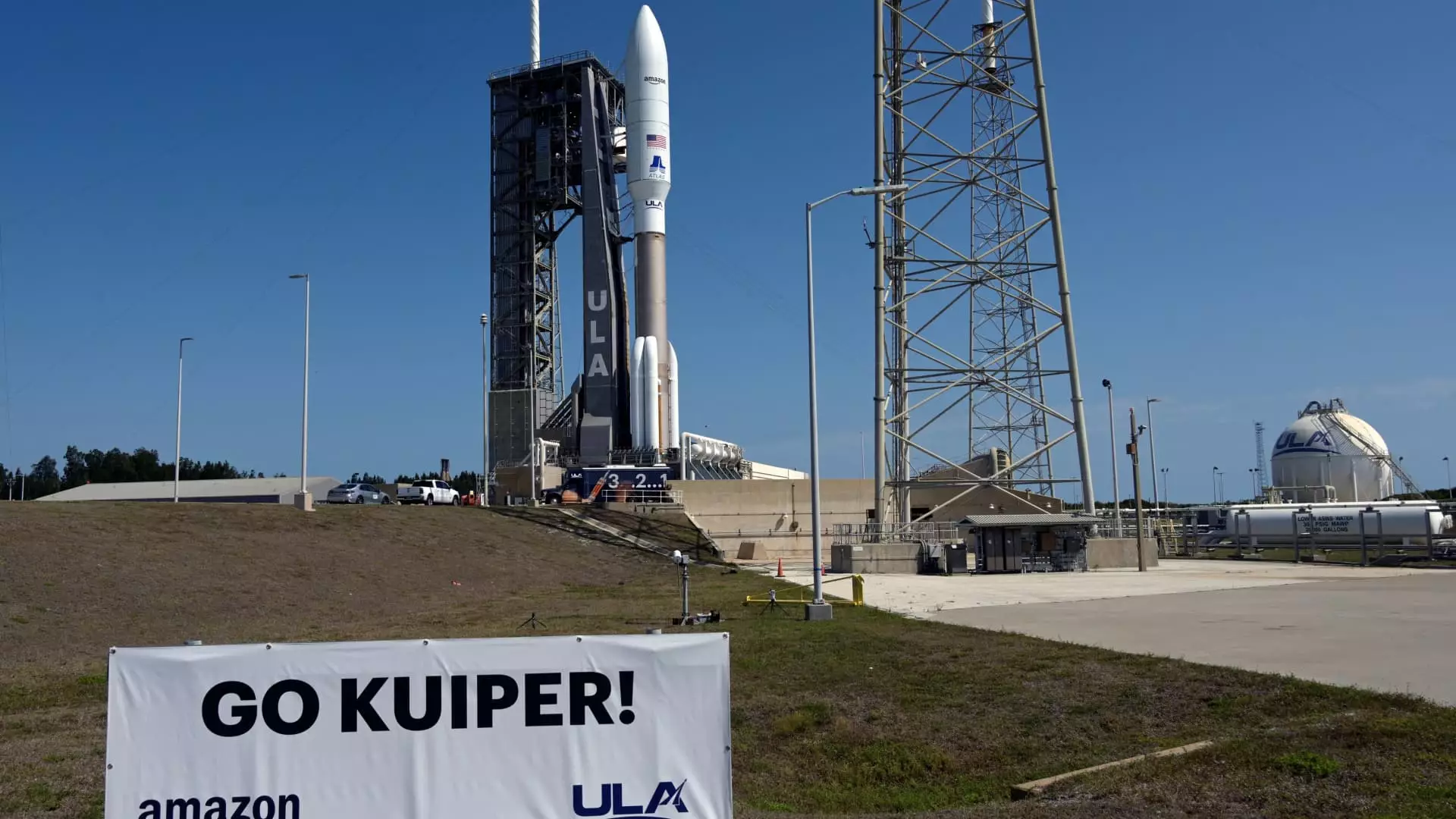In an era defined by innovation and rapid advancements in technology, news of setbacks can carry significant weight, especially when they involve high-profile projects like Amazon’s Project Kuiper. The delay of Amazon’s latest batch of Kuiper internet satellites not only demonstrates the often-overlooked fragility of such ambitious endeavors but also raises questions about the scalability of space initiatives amid technical challenges. The recent postponement due to an “elevated purge temperature” in the Atlas V rocket’s booster engine exemplifies the unpredictability that can derail even the most meticulously planned operations.
Tight Timelines and High Stakes
The stakes are undeniably high for Amazon, which is racing against a looming July 2026 deadline imposed by the Federal Communications Commission (FCC). To meet this target, they must launch at least 1,618 satellites. The company is clearly feeling the pressure, as the success of Project Kuiper is not merely an exercise in ambition; it represents a vital strategic maneuver to compete with entrenched players like SpaceX’s Starlink. With competitors already establishing an impressive foothold in the satellite internet domain, Amazon’s entry seeks to carve out a new market segment and transform internet accessibility on a global scale.
When ULA CEO Tory Bruno stated that the mission would be scrubbed due to a “possible issue with a GN2 purge line,” it was a sobering reminder of the technical realities behind such grand aspirations. These are not merely hiccups but potential harbingers of larger systemic flaws in planning and execution. The technological complexity of sending satellites into orbit demands not just innovation but also absolute precision at every stage of the launch.
The Implications of Delays
What does this delay signify for Amazon and the future of Project Kuiper? It shines a glaring light on the risks involved in space exploration and satellite deployment. While one could argue that such setbacks are par for the course in any high-tech endeavor, the reality is that they can have magnified effects in competitive landscapes. For Amazon, each delay not only pushes back the timeline but also extends the window for competitors to fortify their own positions.
Moreover, this incident serves as a sobering reflection on the broader implications of the satellite internet industry. With the promise of offering high-speed internet to remote areas and developing nations, the potential to bridge the digital divide has never been more tantalizing. Conversely, such delays threaten to prolong inequalities in internet access. The lofty promise of bringing connectivity to underserved populations hangs in the balance, and every moment of delay adds to the frustration of those awaiting the benefits of these ostensibly life-changing technologies.
Future Prospects: Hope or Hurdle?
Despite the current setback, one cannot underestimate the determination and resources that Amazon is willing to invest in this venture. The enthusiasm surrounding Project Kuiper remains strong, fueled by the company’s ambition to operate a total constellation of over 3,000 satellites. However, the path ahead is fraught with uncertainties. Will Amazon overcome these technical hurdles in time, or will the challenges prove too burdensome to navigate? Only time will tell whether the launch of the second batch will serve as a stepping stone towards triumph or yet another chapter in a saga marked by difficulties.


Leave a Reply